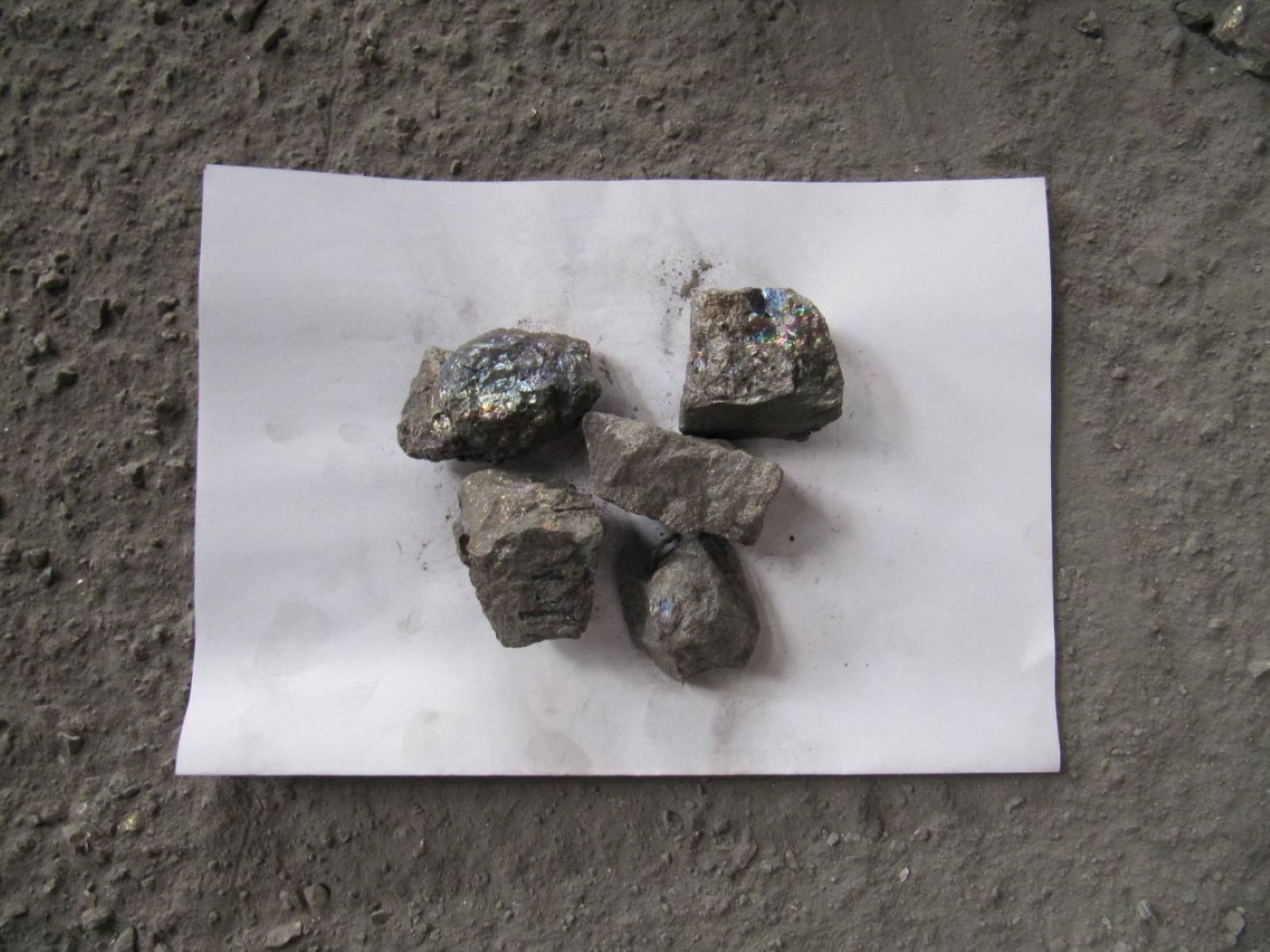
Ferromanganese is a fascinating alloy that plays a crucial role in steel production. But what exactly is ferromanganese? It's an iron and manganese compound used to add strength and durability to steel. This alloy is created by heating a mixture of oxides, such as manganese oxide and iron oxide, with carbon in a furnace. The result is a material that significantly enhances the properties of steel, making it more robust and wear-resistant. In this post, we'll dive into 35 intriguing facts about ferromanganese, shedding light on its production, uses, and impact on various industries. Get ready to learn some surprising details about this essential alloy!
Key Takeaways:
- Ferromanganese, a vital alloy in steelmaking, improves steel quality by removing impurities. It comes in different types and has a rich historical background, impacting industries and economies worldwide.
- Ferromanganese has diverse applications, from deoxidizing and desulfurizing steel to being used in art, space exploration, and the automotive industry. Its future holds promise with ongoing research for sustainability and advanced alloys.
What is Ferromanganese?
Ferromanganese is an alloy of iron and manganese, commonly used in steelmaking. This alloy plays a crucial role in the production of various steel grades, enhancing their properties. Here are some fascinating facts about ferromanganese.
-
Ferromanganese Composition: Typically, ferromanganese contains about 80% manganese and 20% iron. The exact composition can vary depending on its intended use.
-
Steelmaking Essential: This alloy is vital in steelmaking. It helps remove oxygen and sulfur impurities from steel, improving its quality.
-
Types of Ferromanganese: There are three main types: high-carbon, medium-carbon, and low-carbon ferromanganese. Each type has different applications in steel production.
Historical Background of Ferromanganese
Understanding the history of ferromanganese can provide insights into its development and importance in modern industry.
-
First Production: Ferromanganese was first produced in the mid-19th century. Its invention revolutionized steelmaking.
-
Bessemer Process: The Bessemer process, developed in the 1850s, increased the demand for ferromanganese. This process required the alloy to remove impurities from molten iron.
-
World War Impact: During World War I and II, the demand for ferromanganese surged due to the increased need for high-quality steel in weaponry and vehicles.
Production Process of Ferromanganese
The production of ferromanganese involves several steps, each crucial to achieving the desired alloy quality.
-
Raw Materials: The primary raw materials for producing ferromanganese are manganese ore and iron ore.
-
Blast Furnace Method: One common method of production is using a blast furnace. In this process, raw materials are heated to high temperatures to form the alloy.
-
Electric Arc Furnace: Another method involves an electric arc furnace, which uses electricity to melt the raw materials and produce ferromanganese.
Applications of Ferromanganese
Ferromanganese has a wide range of applications, particularly in the steel industry.
-
Deoxidizer: It acts as a deoxidizer in steelmaking, removing oxygen from molten steel to prevent oxidation.
-
Desulfurizer: The alloy also serves as a desulfurizer, helping to remove sulfur impurities from steel.
-
Alloying Agent: Ferromanganese is used as an alloying agent to improve the hardness, strength, and durability of steel.
Environmental and Economic Impact
The production and use of ferromanganese have significant environmental and economic implications.
-
Energy Consumption: Producing ferromanganese is energy-intensive, requiring large amounts of electricity and heat.
-
Recycling: Scrap steel containing ferromanganese can be recycled, reducing the need for new raw materials and energy.
-
Economic Importance: The alloy is crucial for the steel industry, which is a major contributor to the global economy.
Interesting Facts about Ferromanganese
Here are some additional intriguing facts about this essential alloy.
-
Color: Ferromanganese has a silvery-gray appearance, similar to other ferrous alloys.
-
Density: The density of ferromanganese is about 7.2 grams per cubic centimeter, making it a relatively heavy material.
-
Melting Point: It has a high melting point, typically around 1,260 to 1,350 degrees Celsius.
-
Magnetic Properties: Ferromanganese is not magnetic, despite containing iron.
-
Global Production: China is the largest producer of ferromanganese, followed by India and Ukraine.
Health and Safety Considerations
Working with ferromanganese requires attention to health and safety due to its potential hazards.
-
Dust Inhalation: Inhalation of ferromanganese dust can cause respiratory issues. Proper ventilation and protective equipment are essential.
-
Skin Contact: Prolonged skin contact with ferromanganese can cause irritation. Workers should wear protective clothing.
-
Fire Hazard: The alloy can be a fire hazard in powder form. It should be stored and handled with care.
Future of Ferromanganese
The future of ferromanganese looks promising, with ongoing research and development aimed at improving its production and applications.
-
Innovative Techniques: New production techniques are being developed to reduce energy consumption and environmental impact.
-
Advanced Alloys: Researchers are exploring advanced ferromanganese alloys with enhanced properties for specialized applications.
-
Sustainability: Efforts are being made to make ferromanganese production more sustainable through recycling and waste reduction.
Fun Facts about Ferromanganese
To wrap things up, here are some fun and lesser-known facts about ferromanganese.
-
Space Exploration: Ferromanganese alloys are being studied for potential use in space exploration due to their strength and durability.
-
Art and Sculpture: Some artists use ferromanganese in sculptures and other artworks for its unique properties.
-
Historical Artifacts: Ancient artifacts containing manganese have been found, indicating early use of manganese in metallurgy.
-
Biological Role: Manganese, a key component of ferromanganese, is an essential trace element for human health.
-
Corrosion Resistance: Steel containing ferromanganese has improved corrosion resistance, making it ideal for marine applications.
-
Automotive Industry: The automotive industry relies heavily on ferromanganese for producing high-strength steel components.
-
Construction: Ferromanganese-enhanced steel is widely used in construction for its strength and durability.
-
Railway Tracks: Steel railway tracks often contain ferromanganese to withstand heavy loads and wear.
-
Sports Equipment: High-strength steel containing ferromanganese is used in sports equipment like bicycles and golf clubs.
Ferromanganese: A Crucial Alloy
Ferromanganese plays a vital role in steel production. This alloy, made from iron and manganese, enhances steel's strength, durability, and resistance to wear. Found in various grades, ferromanganese adapts to different industrial needs, from construction to automotive manufacturing. Its production involves smelting manganese ore with iron, a process that requires high temperatures and precise control.
Understanding ferromanganese's importance helps appreciate its impact on modern infrastructure. Without it, many everyday items, like buildings, cars, and machinery, wouldn't be as reliable or long-lasting. This alloy's versatility and essential properties make it indispensable in today's world.
Next time you see a skyscraper or drive a car, remember the unsung hero behind their strength: ferromanganese. Its contribution to industry and daily life underscores the significance of this remarkable alloy.
Frequently Asked Questions
Was this page helpful?
Our commitment to delivering trustworthy and engaging content is at the heart of what we do. Each fact on our site is contributed by real users like you, bringing a wealth of diverse insights and information. To ensure the highest standards of accuracy and reliability, our dedicated editors meticulously review each submission. This process guarantees that the facts we share are not only fascinating but also credible. Trust in our commitment to quality and authenticity as you explore and learn with us.


